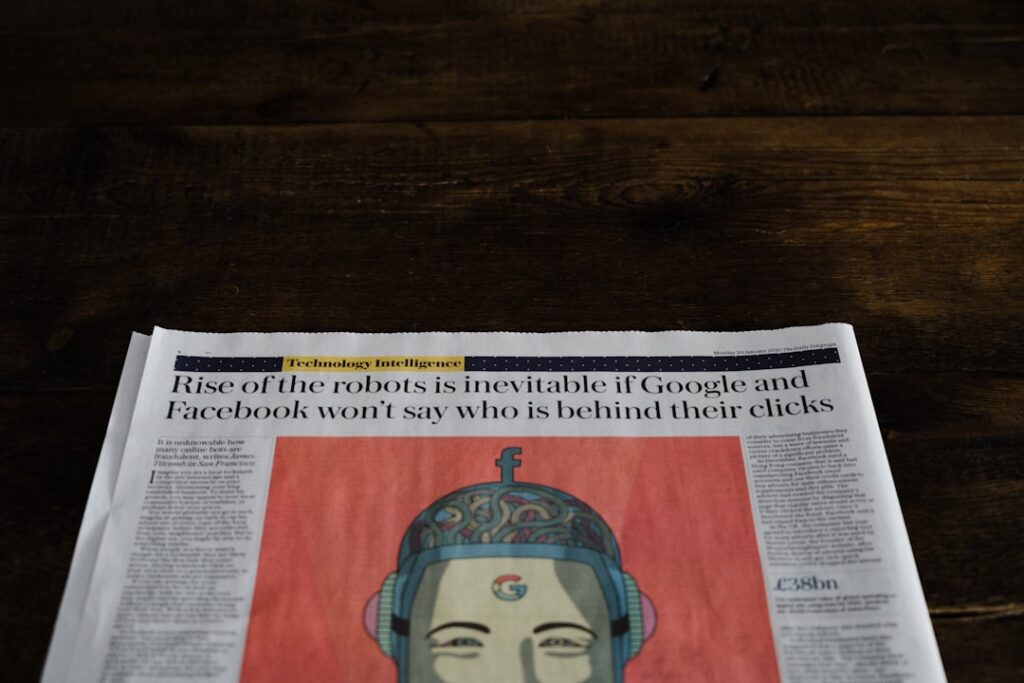COVID-19 vaccines are a crucial tool in the fight against the ongoing global pandemic caused by the novel coronavirus, SARS-CoV-2. These vaccines are designed to stimulate an immune response in the body, providing protection against the virus and reducing the severity of illness if infection does occur. The development and distribution of COVID-19 vaccines have been a top priority for governments, public health agencies, and pharmaceutical companies worldwide.
The importance of COVID-19 vaccines cannot be overstated. Vaccination plays a critical role in controlling the spread of infectious diseases and preventing severe illness, hospitalizations, and deaths. By achieving widespread vaccination, we can build herd immunity, which occurs when a large portion of the population becomes immune to the virus, making it difficult for it to spread. This not only protects individuals but also helps protect vulnerable populations who may not be able to receive the vaccine due to medical reasons.
COVID-19 vaccines work by teaching our immune systems how to recognize and fight the virus that causes COVID-19. Most vaccines stimulate an immune response by introducing a harmless piece of the virus (such as a protein or genetic material) into the body. This prompts the immune system to produce antibodies and activate immune cells that can recognize and destroy the virus if encountered in the future. Different types of COVID-19 vaccines use various approaches to achieve this immune response, including mRNA technology, vector-based delivery systems, protein subunits, or inactivated viruses.
Latest COVID-19 Vaccine Developments: What You Need to Know
Since the emergence of COVID-19, scientists and researchers have been working tirelessly to develop safe and effective vaccines. The development process typically involves several stages, including preclinical studies, clinical trials in humans, regulatory review, and approval or authorization by health authorities.
As of now, several COVID-19 vaccines have been authorized or approved for emergency use in various countries. These include vaccines developed by Pfizer-BioNTech, Moderna, AstraZeneca, Johnson & Johnson, and Sinovac, among others. Each vaccine has undergone rigorous testing to ensure safety and efficacy.
The approval and authorization process for COVID-19 vaccines involves thorough evaluation of clinical trial data by regulatory agencies such as the U.S. Food and Drug Administration (FDA), the European Medicines Agency (EMA), and the World Health Organization (WHO). These agencies review data on vaccine safety, efficacy, and manufacturing quality before granting approval or emergency use authorization.
Availability and distribution of COVID-19 vaccines have been a major focus for governments and health organizations worldwide. Efforts are being made to ensure equitable access to vaccines, especially for vulnerable populations and low-income countries. Vaccine distribution plans vary by country, but generally prioritize healthcare workers, elderly individuals, and those with underlying health conditions. Vaccination campaigns are being rolled out in phases to ensure efficient and fair distribution.
Understanding the Different Types of COVID-19 Vaccines
There are several different types of COVID-19 vaccines that have been developed or are currently in development. Each type utilizes a unique approach to stimulate an immune response against the virus.
mRNA vaccines, such as those developed by Pfizer-BioNTech and Moderna, use a small piece of the virus’s genetic material called messenger RNA (mRNA). This mRNA instructs cells in the body to produce a harmless piece of the virus called the spike protein. The immune system recognizes this spike protein as foreign and mounts an immune response against it. mRNA vaccines have shown high efficacy in preventing COVID-19 infection.
Vector vaccines, like the AstraZeneca and Johnson & Johnson vaccines, use a harmless virus (not the coronavirus) as a delivery system or vector to introduce a piece of the coronavirus into the body. This piece of the virus triggers an immune response, leading to the production of antibodies and immune cells that can recognize and neutralize the coronavirus. Vector vaccines have shown good efficacy in preventing severe illness and hospitalization.
Protein subunit vaccines, such as the Novavax vaccine, contain harmless pieces of the virus, such as proteins or protein fragments. These pieces stimulate an immune response, leading to the production of antibodies that can recognize and neutralize the virus. Protein subunit vaccines have a long history of use in other vaccines and are considered safe and effective.
Inactivated virus vaccines, like the Sinovac vaccine, use a killed or inactivated form of the virus to stimulate an immune response. The inactivated virus cannot cause disease but can still trigger an immune response. Inactivated virus vaccines have been used for decades and are well-established in vaccine development.
COVID-19 Vaccines: Safety and Efficacy Data
The safety and efficacy of COVID-19 vaccines have been thoroughly evaluated through large-scale clinical trials involving tens of thousands of participants. These trials assess the vaccine’s ability to prevent COVID-19 infection, reduce the severity of illness, and minimize hospitalizations and deaths.
Clinical trial data for authorized or approved COVID-19 vaccines have shown high efficacy rates in preventing symptomatic COVID-19 infection. For example, the Pfizer-BioNTech and Moderna vaccines have demonstrated efficacy rates of around 95%, while the AstraZeneca and Johnson & Johnson vaccines have shown efficacy rates of approximately 70% to 80%.
Side effects from COVID-19 vaccines are generally mild and temporary, similar to those experienced with other vaccines. Common side effects include pain at the injection site, fatigue, headache, muscle pain, chills, fever, and nausea. These side effects typically resolve within a few days.
Serious adverse events from COVID-19 vaccines are rare but can occur. Health authorities closely monitor vaccine safety through post-authorization surveillance systems to detect and investigate any potential safety concerns. The benefits of vaccination in preventing COVID-19 infection and its complications far outweigh the risks of adverse events.
Who is Eligible for COVID-19 Vaccines? Distribution Plans and Prioritization
COVID-19 vaccine distribution plans vary by country, but most prioritize certain groups based on factors such as age, occupation, and underlying health conditions. The initial phases of vaccination typically target healthcare workers, elderly individuals, and those at high risk of severe illness or complications from COVID-19.
The prioritization of vaccine distribution aims to protect those most vulnerable to the virus and reduce the burden on healthcare systems. By vaccinating healthcare workers first, we can ensure the continuity of essential healthcare services. Vaccinating elderly individuals helps prevent severe illness and reduce mortality rates. Prioritizing individuals with underlying health conditions helps protect those at higher risk of complications from COVID-19.
Distribution plans also take into account logistical considerations such as vaccine supply, storage requirements, and transportation capabilities. Vaccines that require ultra-cold storage, like the Pfizer-BioNTech vaccine, present additional challenges in distribution compared to vaccines that can be stored at standard refrigeration temperatures.
The success of vaccine distribution relies on efficient coordination between governments, healthcare providers, and public health agencies. Challenges such as limited vaccine supply, logistical complexities, and vaccine hesitancy can impact the speed and effectiveness of distribution efforts.
COVID-19 Vaccine Rollout: Challenges and Successes

The rollout of COVID-19 vaccines has been met with both challenges and successes. One major challenge is vaccine hesitancy, which refers to the reluctance or refusal to receive vaccines despite their availability. Vaccine hesitancy can be fueled by misinformation, fear, mistrust in authorities, or concerns about vaccine safety.
Addressing vaccine hesitancy requires a multi-faceted approach that includes clear communication, education, and addressing concerns with evidence-based information. Public health campaigns, community engagement, and partnerships with trusted individuals and organizations can help build trust and confidence in vaccines.
Equity and access issues have also emerged during the vaccine rollout. Ensuring equitable distribution of vaccines is crucial to prevent further disparities in healthcare access. Efforts are being made to reach underserved communities, marginalized populations, and low-income countries that may face barriers to vaccine access.
Despite these challenges, there have been notable successes in vaccine rollout. Many countries have achieved significant vaccination coverage, protecting vulnerable populations and reducing the burden on healthcare systems. Vaccination campaigns have demonstrated the effectiveness of coordinated efforts between governments, healthcare providers, and community organizations.
Addressing Vaccine Hesitancy: Facts and Myths About COVID-19 Vaccines
Vaccine hesitancy is a complex issue that can be influenced by various factors. Misinformation and myths about COVID-19 vaccines contribute to vaccine hesitancy and can undermine public confidence in vaccination efforts. It is important to address these myths with accurate information based on scientific evidence.
Common myths about COVID-19 vaccines include claims that they were developed too quickly to be safe, that they contain harmful ingredients, or that they can alter DNA. These claims are not supported by scientific evidence. COVID-19 vaccines have undergone rigorous testing and evaluation to ensure safety and efficacy. They do not contain live virus or alter DNA.
Facts about COVID-19 vaccines include their high efficacy rates in preventing symptomatic infection, reducing severe illness and hospitalizations, and preventing death. Vaccines have been shown to be safe through extensive clinical trials involving tens of thousands of participants. The benefits of vaccination far outweigh the risks of adverse events.
Strategies for addressing vaccine hesitancy include providing clear and accurate information about vaccines, addressing concerns with empathy and understanding, engaging with communities through trusted messengers, and countering misinformation with evidence-based facts. Open dialogue, education, and building trust are key to increasing vaccine acceptance and uptake.
COVID-19 Vaccine Distribution Across the Globe: A Global Perspective
COVID-19 vaccine distribution efforts are not limited to individual countries. Global collaboration and partnerships are crucial in ensuring equitable access to vaccines for all populations, regardless of their geographic location or income level.
The COVAX initiative, led by the WHO, Gavi (the Vaccine Alliance), and the Coalition for Epidemic Preparedness Innovations (CEPI), aims to provide fair and equitable access to COVID-19 vaccines for low- and middle-income countries. Through COVAX, participating countries can access a portfolio of vaccines and receive support for vaccine procurement, delivery, and administration.
However, global vaccine distribution faces challenges and disparities. High-income countries have secured a significant portion of the global vaccine supply, leaving fewer doses available for low-income countries. Limited manufacturing capacity, supply chain constraints, and export restrictions have further exacerbated these disparities.
Addressing global vaccine distribution challenges requires collaboration between governments, international organizations, and pharmaceutical companies. Efforts are underway to increase manufacturing capacity, support technology transfer, and facilitate the sharing of vaccine doses with countries in need. Multilateral partnerships and funding mechanisms are also being established to support equitable access to vaccines.
The Future of COVID-19 Vaccines: Booster Shots and Variants
The ongoing evolution of the COVID-19 pandemic presents new challenges for vaccine development and distribution. Variants of the SARS-CoV-2 virus have emerged that may impact the effectiveness of current vaccines. Ongoing research is being conducted to understand the impact of these variants on vaccine efficacy and to develop strategies to address them.
Some variants of concern, such as the Delta variant, have shown increased transmissibility and potential resistance to certain antibodies generated by vaccination. However, current vaccines still provide a high level of protection against severe illness, hospitalization, and death caused by these variants.
Booster shots, or additional doses of the vaccine, may be necessary to enhance and prolong immunity against COVID-19. Research is underway to determine the optimal timing and dosage for booster shots. These additional doses can help maintain high levels of protection, especially in the face of emerging variants.
Research and development efforts continue to explore new vaccine technologies and approaches. This includes the development of vaccines that target multiple variants or provide broader protection against coronaviruses in general. The lessons learned from the COVID-19 pandemic will inform future vaccine development and preparedness for future outbreaks.
What We Know and What We Can Expect from COVID-19 Vaccines
In conclusion, COVID-19 vaccines have played a crucial role in the global response to the pandemic. They are a powerful tool in controlling the spread of the virus, preventing severe illness, and saving lives. The development, approval, and distribution of COVID-19 vaccines have been a remarkable scientific achievement.
COVID-19 vaccines have undergone rigorous testing and evaluation to ensure safety and efficacy. Clinical trial data has shown high efficacy rates in preventing symptomatic infection and reducing severe illness. Side effects are generally mild and temporary, outweighed by the benefits of vaccination.
Vaccine distribution efforts have faced challenges such as vaccine hesitancy, equity issues, and logistical complexities. However, successes have been achieved through coordinated efforts between governments, healthcare providers, and community organizations.
Addressing vaccine hesitancy requires clear communication, education, and countering misinformation with evidence-based facts. Global collaboration is crucial in ensuring equitable access to vaccines for all populations.
The future of COVID-19 vaccines involves ongoing research on booster shots, variants, and new vaccine technologies. Lessons learned from the pandemic will inform future vaccine development and preparedness for future outbreaks.
In conclusion, COVID-19 vaccines are a vital tool in ending the pandemic and returning to a sense of normalcy. Vaccination not only protects individuals but also helps protect vulnerable populations and communities. By staying informed, addressing vaccine hesitancy, and supporting global vaccine distribution efforts, we can all contribute to the fight against COVID-19 and pave the way for a healthier future.
If you’re interested in exploring new ways to make money in the digital age, you might want to check out this informative article on how to make money with connected television. With the rise of streaming services and smart TVs, connected television has become a lucrative platform for advertisers and content creators alike. This article provides valuable insights and tips on how to tap into this growing market. For those concerned about the impact of severe weather events, this related article offers a comprehensive overview of the latest advancements in weather forecasting technology. From improved storm tracking to early warning systems, these innovations are helping communities better prepare for and respond to severe weather conditions. Lastly, if you’re curious about the fascinating world of artificial intelligence, this article on chat GPT is a must-read. It delves into the capabilities of chatbots powered by OpenAI’s GPT-3 model and explores their potential applications in various industries.



